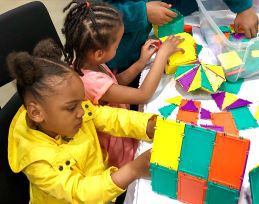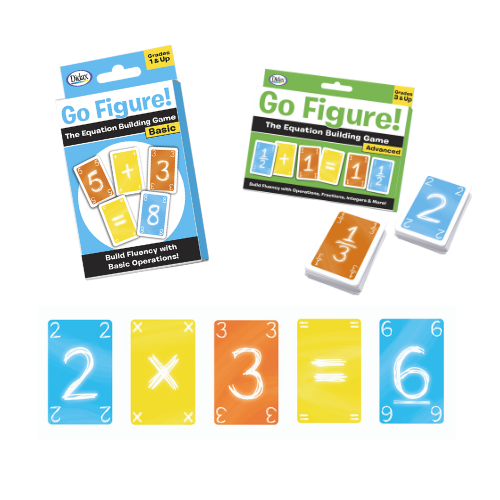Keys to Enjoying PEMDice at Home
- By Ashley D’Innocenzo
- Jun 9, 2020
A Q&A with creator Eric Olson
PEMDice, the “Order of Operations Game,” is an excellent resource for expanding mathematical thinking in a fun, engaging way. It is a perfect fit for kids at home who enjoys a challenge at any level. It can start simply, and evolve into a remarkably complex puzzle.
Let’s begin with a word of reassurance that adults playing PEMDice with children do not need to worry about being mathematical wizards. In order to enjoy PEMDice all you need is an open mind. Trust yourself, explore, question, and look for the rules of successful play as you form true equations. In time, strategies, techniques, and effective methods will emerge. Simply find a calculator if you need to check an equation.
Think of the game like a collection of letters that invite a young reader to make words. PEMDice will generate numbers and operators that invite young mathematicians to make equations. At first, children will build simple equations with only a few dice, but these equations will evolve quickly with time, especially as players gain an understanding of the rules of operational order (Parentheses/Grouping Symbols → Exponents → Multiplication & Division → Addition & Subtraction).
How can parents support kids playing PEMDice at home?
It is easy to get started, and almost no rules, simply hand your child the canister and say “Check out this game...can you make an equation that works?” and see where their curiosity takes them. Let them examine the many possibilities and explore their options. They will invent a challenge on their own as they discover, and explore--while you ask guiding questions: “Do you see any way to use the fraction cube and get a whole number?” or, “Can you subtract (or add) numbers that will work with your fraction cube?” Resist the temptation to give away the secrets of playing PEMDice, but check your solutions with a calculator to be sure you are following the rules of PEMDAS correctly!Are there ways to adjust the game?
Absolutely! The strength of PEMDice is that it can be played in a great variety of ways. Begin simply, modifying the rules on the fly. Start by letting all the red (operators) or white (numbers) be “wild” where players choose any face to make the equations they want. Or, remove some of the more challenging dice. As players become adept at finding increasingly complex equations, they can transition to rolling the dice and keeping them fixed. Eventually the game is played with no wild dice at all—just one roll and then you are on your own—this is the most challenging form. Kids will enjoy the challenge of trying to use all available cubes—and can happily play it as a solitaire game. They can play with a parent, sibling, or friend. A key feature of the game is that players move the dice as they think. As they consider different configurations of the PEMDice, the rules of PEMDAS will be greatly reinforced, and patterns of good reasoning strengthened.Do you have ideas for different ways to play?
There are suggestions for several games in the pamphlet that comes in the canister and there are many more to be invented. You can play a sort of “dealer’s choice” in which the rules change each round. One roll must feature a “combo” number (where two dice together form a larger number), another round could require a “mixed number” or another must equal some predetermined larger number, such as today’s date.Can PEMDice be played competitively?
Competition can be introduced carefully, as much of the richness of PEMDice is about collaborative play. If appropriate, the game can be played quite competitively between two or more players. “Can we score 1000 points together?” “Can we go three rolls in a row making an equation with more than 12 dice?” If players want to play competitively, then agree on some set of rules, set a timer, and enjoy the thrill!In the end, my advice to parents is to let the game float around the dining room table for kids to find and play with on their own, or with minimal nudging. The occasional challenge of “Hey, try to make an equation using the fraction before we go start school” could be all that is needed. Once kids are used to the challenge, it can take off on its own. Good luck!








 © 2025 Didax, Inc. All Rights Reserved.
© 2025 Didax, Inc. All Rights Reserved.